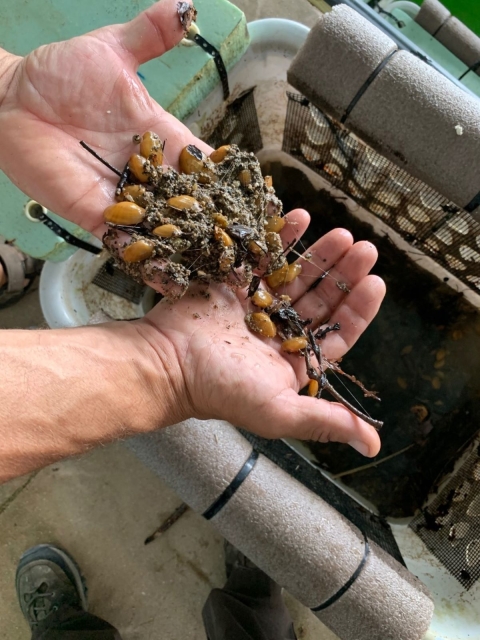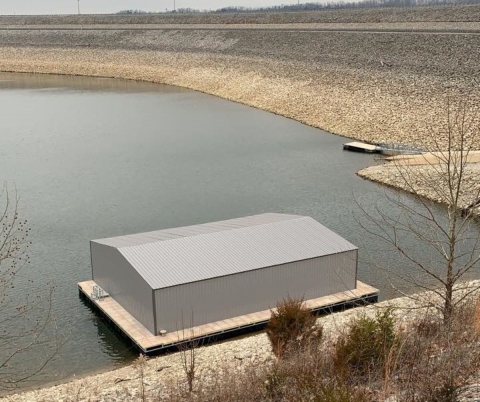2021 marked an exciting year for Wolf Creek National Fish Hatchery’s freshwater mussel program! Since 2015 Wolf Creek has partnered with Kentucky Department of Fish & Wildlife’s Center for Mollusk Conservation team to propagate several imperiled freshwater mussel species.
Together, Wolf Creek NFH and KDFWR staff place host fish infested with glochidia into submerged rearing racks which are left to overwinter until the following spring when they are removed and inventoried. Once inventoried, the one year old mussels are then placed into baskets that float over the rearing racks. This allows space for another year of growth before harvest (at 20 mm) while freeing up the racks for the next year class.
With the completion of the hatchery’s new boat house in 2021, mollusk conservation potential continues to grow. Last year alone hatchery staff along with KDFWR harvested a total of 25,476 mussels, representing 7 species including the Cumberlandian Combshell (Epioblasma brevidens), Snuffbox (Epioblasma triquetra), Pheasantshell (Actinonaias pectorosa), Purple Cat’s Paw (Epioblasma obliquata), Tan Riffleshell (Epioblasma walkeri), Cumberland Bean (Venustaconcha troostensis), and Fluted Kidneyshell (Ptychobranchus subtentum) from the 21 year class.
Prior to obtaining the boathouse, hatchery and KDFWR staff were relying on public access sites at various locations on Lake Cumberland. Though effective, the former setup proved to be time consuming in travel and record-keeping. Obtaining the boathouse has streamlined production by having all mussel species in the same location with additional surface area, allowing increases in future production. Staff are eager for the 2022 year class harvest as it will be the first full year in the new space!






